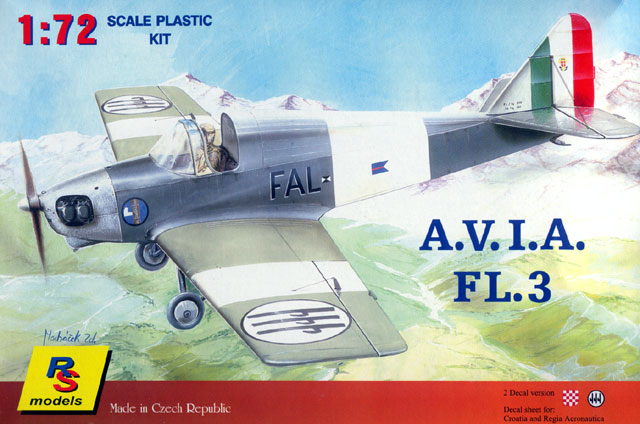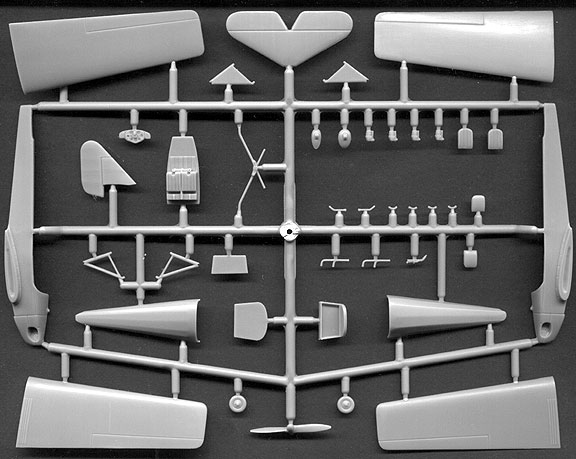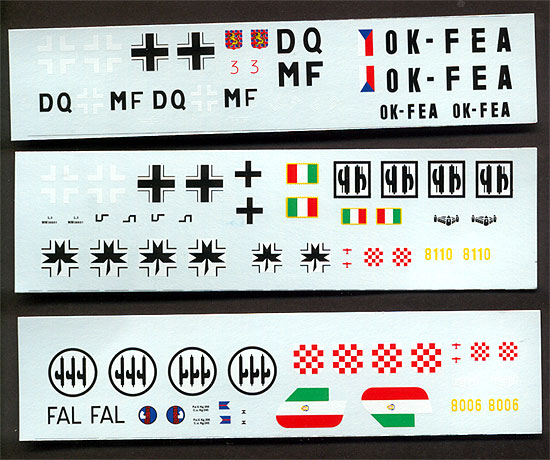|
A.V.I.A FL.3

RS Models

RS Models' 1/72 scale AVIA Fl.13 kits are available online at Squadron.com
S
u m m a r y
|
| Catalogue Number: |
9203, 9204 and 9205 A.V.I.A Fl.13 |
| Scale: |
1/72 |
| Contents and Media: |
41 parts in medium grey plastic plus
two parts in vacform clear plastic (canopy and spare) |
| Price: |
Each USD$16.96 from
Squadron.com |
| Review Type: |
First Look |
| Advantages: |
Small but impressive; very high
quality plastic; restrained and convincing fabric texture; consistent
engraved panel detail; thin trailing edges; nice quality decals. |
| Disadvantages: |
Ambiguous and oversimplified
instructions; no locating pins. |
| Recommendation: |
Recommended |
Reviewed by
Brett Green
Here in Australia, if you labelled a model "RS", it would be uncomplimentary.
In the extreme.
I am pleased to report that RS Models' family of 1/72 scale AVIA Fl.13 kits
is far from RS in the Australian vernacular!
The AVIA Fl.13 was a training/touring aircraft that first flew in 1938.
During the war, these little trainers were flown by Croatia, Germany and Italy.
Post war users were even broader.
RS Models has released three boxings of the F.13. The 41 styrene parts, all
contained on a single sprue, are identical in all three versions. Optional
fuselage spines, fixed undercarriage legs and vacform canopies determine the
different versions. Each model also gets its own unique set of decals too.
The plastic parts are very impressive. Indeed, in this small scale they are
better than some long-run, metal mould models I have seen. The quality of the
plastic is very good - neither too hard nor too soft. The sprue attachment
points are very narrow, and there are no visible blemishes on the visible
surfaces of the model. Even the ejector pin marks on the inside surfaces of
parts are minimal. Unlike some other recent short-run releases, it won't be
necessary to grind down giant ejector pins before mating parts. Fabric texture
on the tail surfaces and fuselage spine is very restrained and convincing. There
is not much structural detail on the surface, but the small amount is
consistently engraved. The wings are supplied in top and bottom halves, but the
trailing edges are very thin - no thinning required here!

The main concession to the short-run nature of these kits is the absence of
locating pins. However, alignment should not be a problem on a model this small.
The vacform parts, different in each kit, are thin and clear of distortion. A
spare canopy is supplied in each kit. Two versions are open-topped, and the
German version has an enclosed canopy.
The instructions are not up the rest of the kit's standard. The diagrams are
blurry and there is some ambiguity about parts use in one of the instructions.
There is also an inset diagram near the end of the instructions about which I am
completely confused!

On the other hand, the decals are a real treat. They are crisply printed and
perfectly in register. Many of the schemes are very interesting too.
Any of these 1/72 scale Fl.13 kits should build up into a very nice replica
of this little trainer aircraft.
Recommended.
Thanks to Squadron for the review samples.
Review and Images Copyright © 2002 by Brett
Green
Page Created 10 February, 2002
Last updated 22 July, 2003
Back to HyperScale Main Page
Back to Reviews Page
|
Home | What's
New | Features
| Gallery |
Reviews | Reference
| Forum
| Search